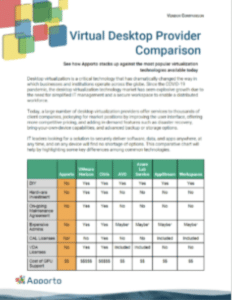Digital Transformation in Higher Education: Opportunities and Risks
Digital transformation is rapidly changing the way we live, work, and learn. In the field of higher education, digital transformation offers a plethora of opportunities to enhance teaching and learning experiences, streamline administrative processes, and increase collaboration and networking among students, professors, and researchers. However, with every opportunity comes risks and challenges that must be addressed to ensure the success of digital transformation efforts.
Understanding Digital Transformation in Higher Education
Higher education institutions have been undergoing a rapid transformation in recent years, with the adoption of digital technologies playing a central role in this change. Digital transformation has brought about significant improvements in the way universities operate and deliver value to their stakeholders. In this article, we will explore the concept of digital transformation in higher education, its role in transforming the sector, and the key drivers behind this transformation.
Defining Digital Transformation
Digital transformation can be defined as the process of using digital technologies to fundamentally change how organizations operate and deliver value to stakeholders. In the context of higher education, digital transformation refers to the use of digital technologies to enhance teaching and learning experiences, create new research opportunities, and streamline administrative processes. This transformation is not just about the adoption of new technologies but also about the cultural shift that comes with it. It involves a change in mindset and a willingness to embrace new ways of working.
Universities are increasingly using digital technologies to enhance the student experience. For example, online learning platforms have made it easier for students to access course materials and collaborate with their peers. Virtual reality simulations have also been used to create immersive learning experiences that allow students to explore complex concepts in a more engaging way.
The Role of Technology in Higher Education
The role of technology in higher education has evolved rapidly in recent years. From online learning platforms to virtual reality simulations, technology has opened up new opportunities for students and professors to connect, collaborate, and engage in creative problem-solving. Technology has also made it easier for universities to manage administrative processes and track student progress, leading to significant improvements in efficiency and effectiveness.
One of the most significant impacts of technology on higher education has been the democratization of education. Online courses and digital learning materials have made education more accessible to people all around the world, regardless of their location or financial situation. This has led to a rise in lifelong learning, as people can now access educational resources at any time and from anywhere.
Key Drivers of Digital Transformation in Higher Education
Several key drivers are fueling digital transformation in higher education. One of the most significant drivers is the increasing access to digital technologies. As technology becomes more affordable and accessible, universities are finding it easier to adopt new digital tools and technologies.
Another driver of digital transformation in higher education is the growing demand for flexible learning options. Many students now prefer to learn at their own pace and on their own terms, and digital technologies have made this possible. Online courses and digital learning materials allow students to learn at any time and from anywhere.
The need for data-driven decision making is also driving digital transformation in higher education. Universities are now collecting vast amounts of data on student performance, engagement, and satisfaction. This data can be used to make more informed decisions about curriculum development, course delivery, and student support.
Finally, the desire to address societal problems through research and innovation is also driving digital transformation in higher education. Universities are using digital technologies to conduct research in areas such as healthcare, sustainability, and social justice. This research is helping to solve some of the world’s most pressing problems and create a better future for all.
In conclusion, digital transformation is transforming higher education in significant ways. Universities are using digital technologies to enhance teaching and learning experiences, streamline administrative processes, and conduct research that addresses societal problems. As technology continues to evolve, we can expect to see even more significant changes in the higher education sector.
Opportunities Presented by Digital Transformation
Digital transformation has revolutionized the way we live, work, and learn. From online shopping to virtual meetings, digital technologies have transformed the way we interact with the world. In the field of education, digital transformation has presented a wealth of new opportunities for enhancing learning experiences, improving access to education, and streamlining administrative processes. Let’s explore some of the ways in which digital transformation is transforming the world of education.
Enhanced Learning Experiences
Digital technologies offer a wealth of new opportunities for enhancing learning experiences. For example, online learning platforms can provide students with access to interactive lectures, virtual lab simulations, and personalized learning paths. These tools can help students learn at their own pace and in their own style, making education more engaging and effective. Digital technologies can also facilitate collaboration among students, enabling them to work together on group projects and share ideas and resources anytime and anywhere. This can help students develop important teamwork and communication skills that are essential for success in the modern workplace.
Improved Access to Education
Remote learning options have made education more accessible to people around the world. Digital technologies have made it possible for students to access courses, certificates, and degrees online, making it easier for people with busy schedules or limited mobility to pursue their educational goals. This has opened up new opportunities for people who may not have had access to traditional educational pathways, such as those living in remote areas or those who cannot attend classes in person due to work or family commitments.
Data-Driven Decision Making
Digitization enables universities to collect, analyze, and make decisions based on vast amounts of data. This data can help institutions identify areas for improvement, monitor student progress, and make evidence-based decisions that support student success and institutional efficiency. For example, data analytics can help universities identify which courses are most popular among students, which courses have the highest completion rates, and which courses are most likely to lead to successful career outcomes. This information can help universities make informed decisions about course offerings, program development, and resource allocation.
Streamlined Administrative Processes
Digital technologies can help universities manage administrative processes more efficiently, reducing costs and improving the student experience. For example, digital tools can simplify administrative tasks such as payroll management, course scheduling, and student enrollment, freeing up staff time to focus on more value-adding activities. This can help universities run more smoothly and provide students with a better overall experience.
Increased Collaboration and Networking
Digital technologies enable students and professors to collaborate and network more effectively, both within universities and across institutions. For example, online communities and discussion forums allow students and professors to share ideas and best practices, while video conferencing technology enables remote collaboration and learning opportunities that were previously impossible. This can help students build valuable connections and gain exposure to a wider range of perspectives and ideas.
Overall, digital transformation has presented a range of exciting opportunities for the world of education. As universities continue to embrace digital technologies and explore new ways of delivering education, we can expect to see even more innovative and impactful changes in the years to come.
Risks and Challenges of Digital Transformation
Digital transformation has become a buzzword in higher education, with many universities seeking to modernize their operations and improve student outcomes through the use of digital technologies. While digital transformation can bring many benefits, it also poses several risks and challenges that universities must address to ensure success.
Cybersecurity Threats
One of the most significant risks associated with digital transformation is the increased threat of cybersecurity attacks. As universities rely more heavily on digital technologies to store and process sensitive data, they become more vulnerable to cyber-attacks that can compromise their systems and damage their reputation. It is essential for universities to implement robust cybersecurity measures to protect against these threats and ensure that their systems are secure.
Privacy Concerns
Another risk associated with digital transformation is the potential for privacy breaches. With more data being stored and processed digitally, universities must be vigilant about protecting the personal information of their students and staff. They must ensure that their data is stored securely and that only authorized individuals have access to it. Additionally, universities must be transparent about their data collection and use policies to build trust with their stakeholders.
Digital Divide and Inequality
While digital transformation has the potential to improve access to education and reduce inequality, it can also exacerbate existing disparities. Students from disadvantaged backgrounds may not have access to the same digital technologies or online learning opportunities as their peers, creating a digital divide that can impact their academic success. Universities must work to address these disparities and ensure that all students have equal opportunities to succeed.
Resistance to Change
Resistance to change can be a significant barrier to digital transformation. Faculty and administrative staff may be resistant to new technologies or ways of working, making it difficult to implement digital transformation initiatives. Universities must engage stakeholders in the transformation process, provide support and training, and communicate effectively to facilitate adoption. It is essential to address concerns and provide clear benefits to encourage buy-in from all stakeholders.
High Implementation Costs
Digital transformation initiatives can be costly, particularly in the short term. Universities must weigh the potential benefits of digital transformation against the upfront costs and ensure that they have a clear return on investment strategy before embarking on any digital transformation projects. Careful planning and budgeting are crucial to ensure that digital transformation initiatives are sustainable and provide long-term benefits. In conclusion, while digital transformation can bring many benefits to higher education, it also poses several risks and challenges that universities must address. By implementing robust cybersecurity measures, protecting privacy, addressing inequality, engaging stakeholders, and carefully planning and budgeting, universities can successfully navigate the challenges of digital transformation and reap its benefits.
Conclusion
Digital transformation presents a myriad of opportunities and challenges for higher education institutions. Universities must carefully consider the risks and take steps to address them while also leveraging the benefits that digital transformation can offer. With careful planning and execution, digital transformation can help universities to enhance learning experiences, improve administrative processes, and drive innovation that benefits their students, faculty, and the wider community.



